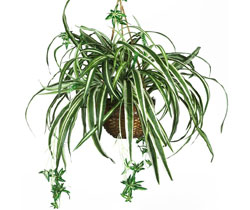Indoor Plants Filter Air
We have constructed buildings to house and protect our loved ones, yet many buildings, by design, harm our most vulnerable.
Indoor air pollution is one of the top 5 threats to public health in the United States (according to the EPA). People in industrial societies spend the majority of their lives indoors, exposed to toxins, molds, microbes, stale or dry air, and less-than-inspiring decor.
Poor indoor air quality is associated with allergies and other chronic illnesses — increased exposure to the air of sealed homes and offices directly correlates to an increase in the number and severity of allergic reactions –, as well as throat and eye irritations. With repeated exposure to an environment full of airborne toxins and viruses, even the strongest among us fall susceptible to respiratory illness or infections.
What Happened?: The Energy Crisis and Indoor Air Quality (IAQ) Problems
After the 1973-4 energy crisis, the Organization of Petroleum Exporting Countries (OPEC) declared an embargo against industrialized nations. To maximize energy-efficiency and reduce costs, the building industry began to seal buildings hermetically, thus reducing fresh air exchanges.
People insulated their homes and installed weather-stripping, motivated by tax incentives. We created ‘sick buildings’ with poor ventilation and increasingly synthetic materials with toxin emissions that made ourselves sick.
The 3 primary sources of poor IAQ are:
- hermetically sealed buildings and their synthetic furnishings which emit volatile organic compounds/chemicals (VOCs);
- reduced/poor ventilation; and
- human bioeffluents.
Do Indoor Plants Help Clean the Air?
Certain indoor plants have the ability to filter the air of toxins and improve air quality. Plants produce oxygen through the process of photosynthesis, and they also absorb carbon dioxide and other pollutants from the air. Some plants are more effective at removing specific toxins than others.
Fortunately, houseplants that thrive indoors are part of a practical, attractive and sustainable air quality management solution. It is the plant, the roots and the microbes working together that remove VOCs from the air. As long as the soil is healthy and its pH is within an ideal range, and there is a good root system to support the organisms, the microcosm will do its work.
For example, the snake plant (also known as Mother-in-law’s tongue) is known for its ability to remove toxins such as formaldehyde, which is commonly found in household products like cleaning supplies and personal care products. The spider plant is also effective at removing formaldehyde and xylene, which is a solvent found in paints and varnishes.
The peace lily is another popular indoor plant that is effective at removing toxins such as benzene, which is found in tobacco smoke and certain household products.
It’s important to note that while plants can help improve air quality, they should not be relied upon as the sole means of air purification. Proper ventilation and the use of air purifiers can also help to improve indoor air quality.
Top 50 Houseplants that Improve Indoor Air Quality

